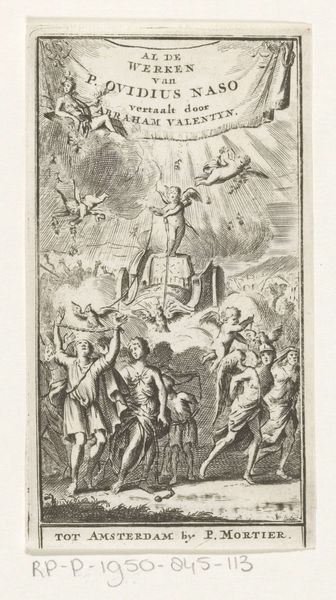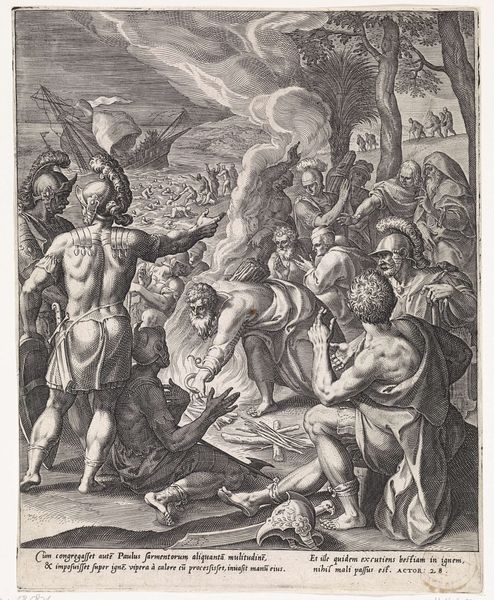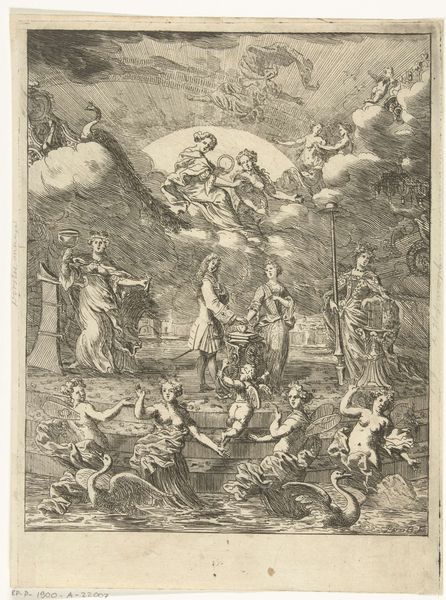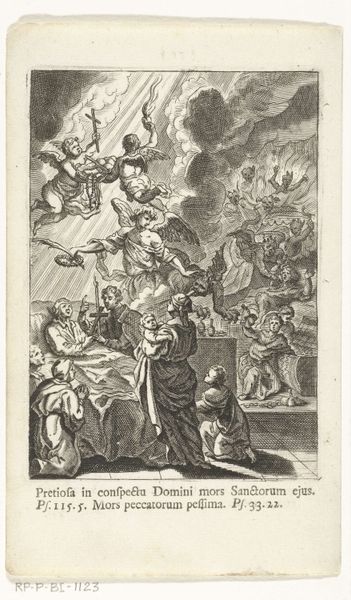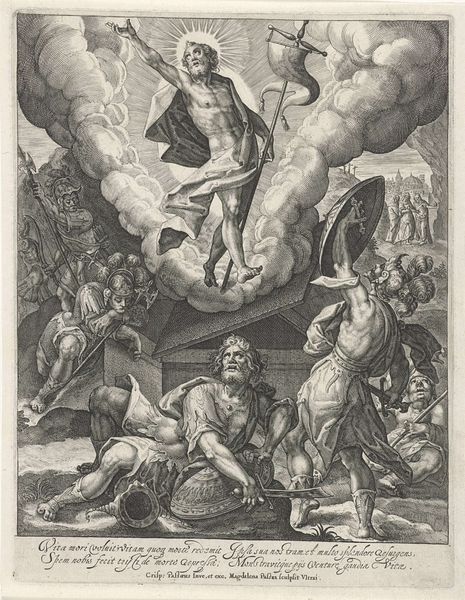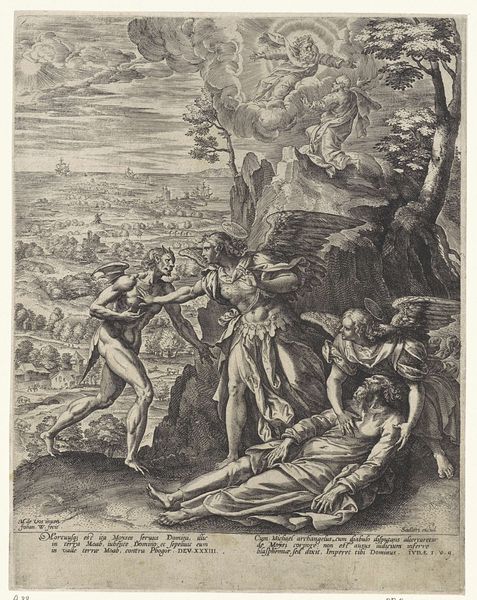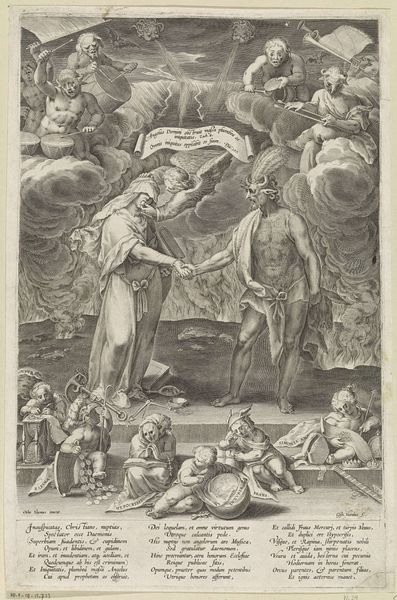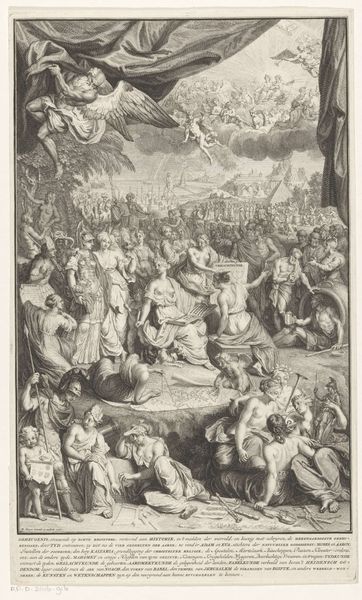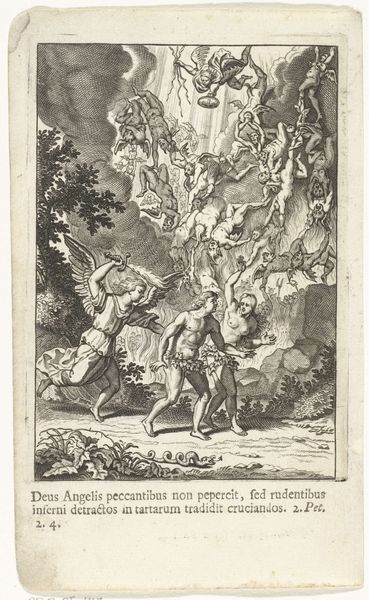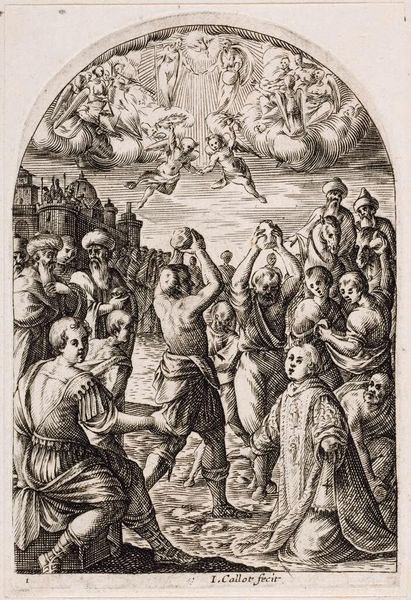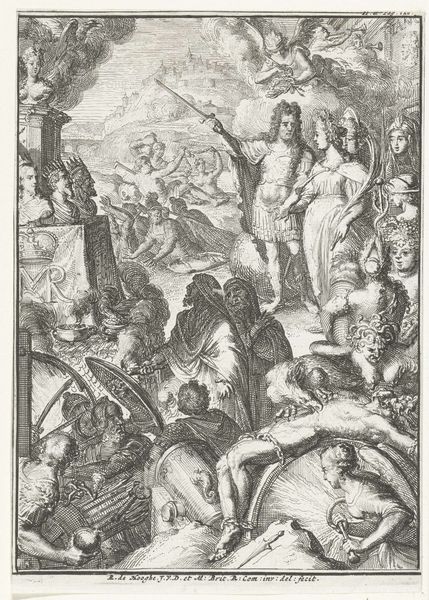
Koningin Amata en haar dochter Lavinia dansend met de bacchanten 1652 - 1654
0:00
0:00
wenceslaushollar
Rijksmuseum
engraving
#
allegory
#
narrative-art
#
baroque
#
pen illustration
#
pen sketch
#
pencil sketch
#
figuration
#
pen-ink sketch
#
line
#
sketchbook drawing
#
sketchbook art
#
engraving
Dimensions: height 259 mm, width 196 mm
Copyright: Rijks Museum: Open Domain
Wenceslaus Hollar made this etching of Queen Amata and her daughter Lavinia dancing with Bacchantes sometime in the 17th century. The image summons a classical scene of ecstatic revelry, but it does so at a time when the institutions of European art were becoming increasingly formalized, through the establishment of royal academies in places like France and England. The print looks back to an antique world of unrestrained passion as a way of critiquing the stoicism of Hollar's own era. We see it in the frenzy of the dance, but also in the figure of the winged demon flying above. The demon could represent the irrationality and the horror of the classical past, but it also reflects the social disruptions of the 17th century, a time of plague, war, and political upheaval. To understand this print further, we might consider the history of theater and dance in the Netherlands at this time, alongside the influence of classical literature and mythology. That sort of research can help us better understand how social and institutional contexts shape the meaning of art.
Comments
No comments
Be the first to comment and join the conversation on the ultimate creative platform.
